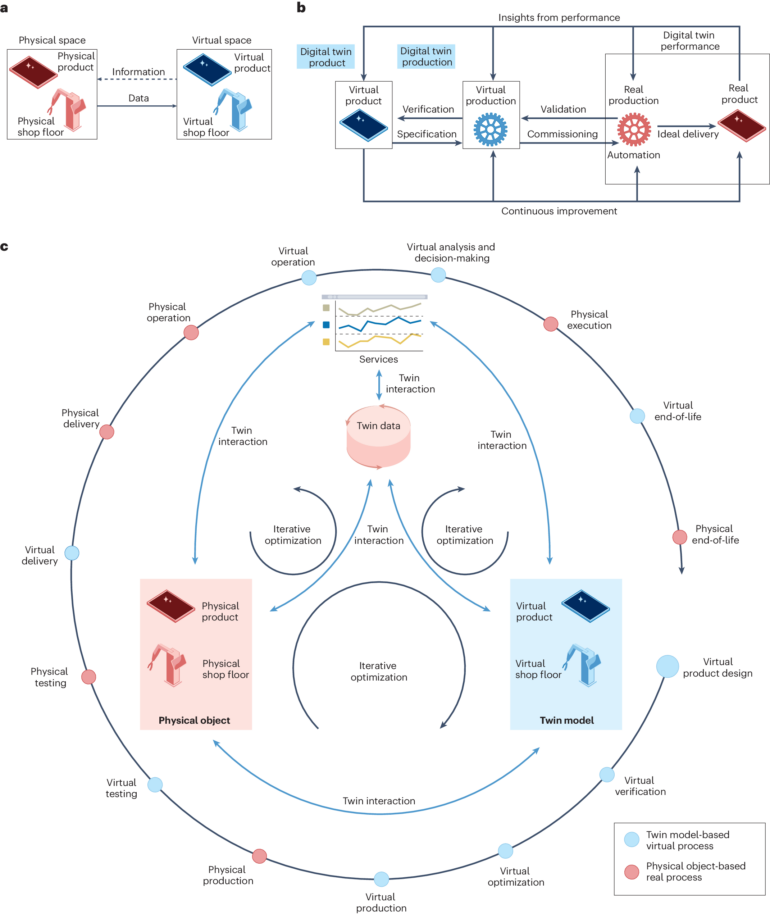A new method uses a digital twin to optimize manufacturing machine speed—known as feed rate—while adhering to quality constraints, according to a study by University of Michigan researchers published in IEEE Access.
“This work is motivated from my time in the manufacturing automation industry before I joined the University of Michigan,” said Chinedum Okwudire, a professor of mechanical engineering and integrative systems and design at U-M and corresponding author on the study.
Okwudire noticed that manufacturers either spent a lot of time fine-tuning machine settings through trial and error or opted for a conservative approach, ensuring quality while sacrificing productivity potential.
“I wondered, could we put this problem in a scientific framework and then be able to provide the machine with quality constraints and have it find the best productivity settings on its own,” said Okwudire.
The algorithm achieved that goal, with an experimental test of the method reducing the cycle time—or time required to produce one unit of output—by 38% for a 3-axis desktop CNC machine tool and by 17% for a desktop 3D printer.
“These are huge numbers in manufacturing. For the 38% cycle time reduction, for every three parts you produce, you now would produce four in the same amount of time. It’s quite significant when you think in terms of cycling through thousands of parts,” said Okwudire.
The model is broadly applicable to any manufacturing context that uses a feed drive—or a tool to carry materials to a cutting tool—including milling, 3D printing and robotics.
The researchers developed the method using a digital twin, a virtual model that mimics the behavior of a real system, based on the physics of the machine and data collected in real-time from sensors.
Physics first principles go a long way, but leveraging real-time data and machine learning makes up for the shortcomings of what physics cannot predict, like variation caused by the specific environment the machine is placed in.
Another key improvement of this framework is the ability to handle uncertainty. The researchers programmed the digital twin to be aware of uncertainty—in this case, the likelihood of producing parts outside of quality thresholds. The algorithm is capable of making decisions of how much speed you can achieve given a quality stringency.
Manufacturers who prefer a more aggressive approach may set stringency to allow 5% of parts produced to fail quality thresholds to achieve more speed. A more risk-averse manufacturer may set the algorithm to only allow 0.1% of parts to fail quality standards.
“The addition of uncertainty awareness to the model reflects how people use machines. There is always some risk, but not everyone has the same risk tolerance or stringency,” said Okwudire.
The researchers acknowledge that to make the algorithm computationally efficient, they made some assumptions about the statistical normality of uncertainty that may not be applicable to some uses.
“We’re very excited about broadening our work to other applications by including sophisticated uncertainty distributions,” said Heejin Kim, a U-M doctoral graduate of mechanical engineering and first author on the study.
Rael Al Kontar of the University of Michigan was an additional co-author.
More information:
Heejin Kim et al, Intelligent Feedrate Optimization Using an Uncertainty-Aware Digital Twin Within a Model Predictive Control Framework, IEEE Access (2024). DOI: 10.1109/ACCESS.2024.3384471
Provided by
University of Michigan College of Engineering
Citation:
Digital twin helps optimize manufacturing speed while satisfying quality constraints (2024, May 14)


